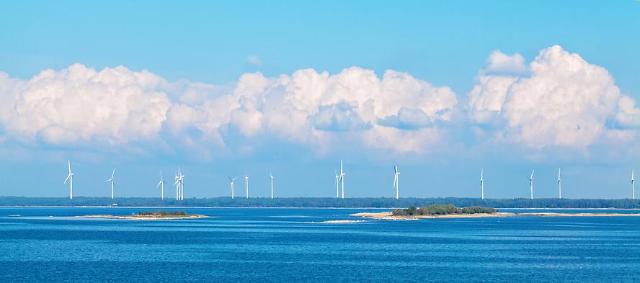
[Gettyimages Bank]
Hyundai Heavy Industries (HHI) has partnered with Korean Register (KR), a maritime classification society, and Korea National Oil Corporation (KNOC) which operates oil and gas fields, to develop the model features durability to withstand strong winds. KNOC has been involved in a project to generate electricity from South Korea's first floating wind farm.
The shipbuilder signed a memorandum of understanding with KR and KNOC to cooperate in designing and verify the performance of a test model. A floating structure for offshore wind power generation must provide enough buoyance to support the weight of turbines.
The floater is a large structure supporting wind power generation facilities, which are similar in design to semi-submersible crude oil production facilities. Compared to fixed offshore wind farms which are generally installed in shallow waters, floating wind turbines located in deep waters can reduce visual pollution, provide better accommodation for fishing and shipping lanes, and reach stronger and more consistent winds.
The southeastern industrial port city of Ulsan has pushed for a major floating wind farm project in line with a government campaign to step up the use of wind, solar and other types of renewable energy. The Seoul government has called for the localization of technologies related to floating offshore wind farms by 2025.
SK E&C joined hands with South Korea's leading steel group, POSCO, in April to develop a floating structure for offshore wind power generation. With POSCO's high-performance steel, the builder will secure core technologies for the development of an independent model optimized for the domestic marine environment.




